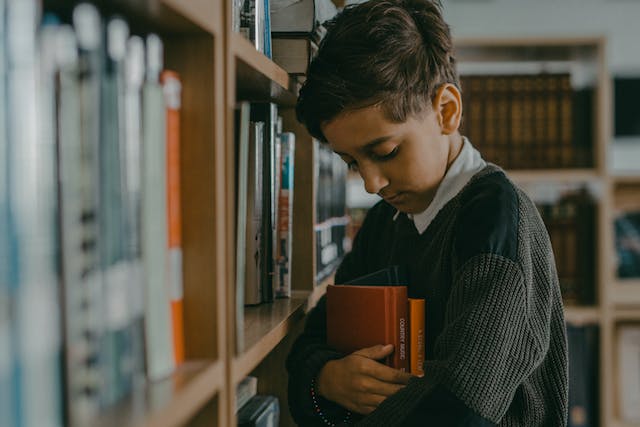In an era dominated by digital distractions, the battle to capture the attention and curiosity of young minds is more challenging than ever. Among the myriad of modern-day temptations, TikTok stands out as a formidable contender, often labeled as the “junk food of media” with its bite-sized, addictive content. As concerns rise about the impact of social media on children’s reading habits, there is a growing call to revive school libraries as a potent antidote to the TikTok obsession.
The late Poet Laureate Sir John Betjeman found solace in the haberdashery department of Peter Jones in Sloane Square, deeming it an ideal refuge. However, in today’s context, a different haven is needed—a sanctuary that not only shields children from the allure of digital ephemera but also nurtures their intellect and imagination. That sanctuary is the school library.
The journey through life, as measured by library shelves, is a sentiment many can resonate with. From childhood visits to the local municipal library to exploring the vast stacks of renowned institutions like the London Library, the impact of these literary repositories is profound. Yet, it is the school libraries that leave an indelible mark on the reading habits of individuals.
Primary school libraries, with their cozy corners and enforced attendance, set the foundation for a lifelong love for books. Transitioning to secondary school, the library becomes a sanctuary where young readers find solace, escape, and the means to navigate the challenges of adolescence. These modest state school libraries serve as the breeding ground for a generation of avid readers, armed with a powerful remedy for life’s various tribulations.
However, a stark reality surfaces— not all children today have the privilege of experiencing the enriching environment of a school library. The Great School Libraries survey conducted last year revealed an alarming lack of balance in school library resources. Unlike prisons, there is no statutory provision mandating libraries in British schools, and the Department for Education does not monitor school library numbers.
In response to this deficiency, prominent children’s writers, including Philip Pullman, Julia Donaldson, and Sir Michael Morpurgo, have been vocal advocates for legislation ensuring that every school is equipped with a library. Pullman, in emphasizing the library’s importance, states that it should contain books beyond exam requirements—books on every subject under the sun, fostering a holistic approach to learning.
The battle against the TikTok obsession is not merely about pitting one form of entertainment against another. It is a plea to rekindle the love for long-form reading, a habit that offers unique benefits. While TikTok touts its success in sparking a passion for reading among teens through #BookTok, it cannot replace the depth and intellectual engagement that arise from spending quality time immersed in a book.
A reading habit, cultivated early and nurtured in the quiet corners of a school library, is an addiction that uniquely enhances one’s character, happiness, and economic utility. In a world where attention spans are challenged by fleeting digital stimuli, school libraries, managed by the kind of fiercely benevolent librarians reminiscent of childhood, emerge as a vital counterforce—a sanctuary fostering intellectual nourishment and providing the much-needed antidote to the junk food of social media.
Reviving school libraries is not just a call to preserve a cherished tradition; it is a strategic move to safeguard the minds of the future from the allure of TikTok and empower them with the enduring benefits of immersive reading. The school library, with its shelves of knowledge and haven-like ambiance, can be the beacon guiding children away from the digital whirlwind, offering them a path to enlightenment through the magic of books.




Comments are closed